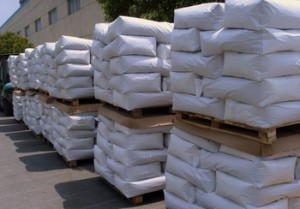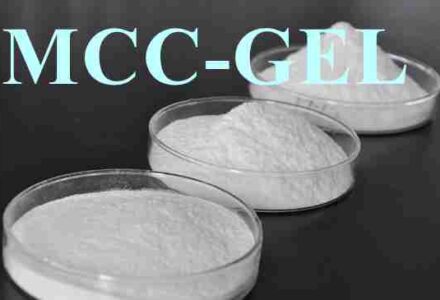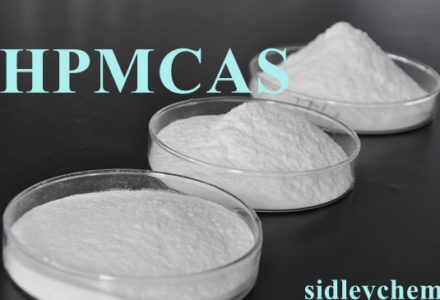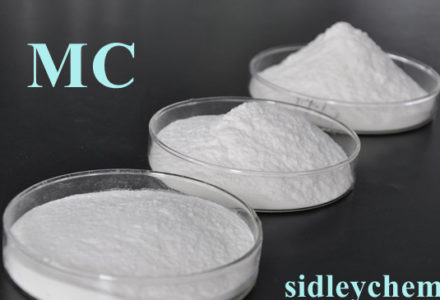Hydroxypropyl Methylcellulose – Applications and Benefits
SidleyCel Hydroxypropyl Methylcellulose
Sidley Chemical Co.,LTD is a manufacturer of Hydroxypropyl Methylcellulose, If interesting it, please don’t hesitate contact us. E-mail: [email protected]
SidleyCel™ Hydroxypropyl MethylCellulose product is a non-ionic cellulose ether made through a series of chemical processes, with the natural polymer cellulose as the raw material. The product is a non-ionic cellulose ether in the shape of white powder, odorless and tasteless. In cold water, it swells into a clear or slightly turbid colloidal solution. It has thickening, adhesion, dispersion, emulsification, film-formation, suspension, gelation, surface activity, water retention, providing protective colloids and other properties. Hydroxypropyl methylcellulose (HPMC) can be used in building materials, synthetic resin, ceramic industry, medicine, food, textile, agriculture, daily chemicals and other industries.
Hydroxypropyl Methyl Cellulose products have different proportions of Methoxy and Hydroxypropyl, thus affecting the thermal gelation temperature of Hydroxypropyl Methyl Cellulose, and other property items.
In processed foods, Hydroxypropyl MethylCellulose has many excellent properties. According to the thermal gelation, film-forming, thickening and other properties it can be applied to different foods so as to enhance the taste of food. The formulation of bread contains 1% of Hydroxypropyl Methylcellulose, and gelation occurs in contact with hot oil. In this way, a protective layer can be formed at the edge of the frying food, greatly reducing the absorption of fat.
Application of SidleyCel™ Hydroxypropyl Methyl Cellulose in the Construction Industry: As the water-retaining agent and retarder of cement mortar, it enables the mortar to have pumping property. In plaster slurry, gypsum materials, putty powder or other building materials, it acts as a binder and helps to improve the spreadability and prolong the operating time.
Application of Hydroxypropyl Methyl Cellulose in PVC (Polrvinyl Chloride): In the production of PVC, it can act as a dispersing agent, the main additive in the preparation of PVC by suspension polymerization.
|
Applications |
Description/Benefits |
| As the product is non-ionic, and in the preparation process can be effectively purified by washing with hot water, it has a very low ash content. Hydroxypropyl Methylcellulose products can fully meet the standards for use of medicine, food, and personal care products. | |
| In the polymerization process of PVC suspension polymerization system, The use of Hydroxypropyl Methylcellulose as a dispersant can improve suspension dispersion properties, can also improve the particle morphology, and enhance the absorption performance on plasticizers. | |
| Hydroxypropyl Methylcellulose has high water-holding capacity, can extend the working time of mortar, improve work efficiency and is good for the mortar to produce high mechanical strength during solidification. |
Document Library
| Effects of Hydroxypropyl Methyl Cellulose(HPMC) in Dry Mortar in Construction:Hydroxypropyl Methyl Cellulose has higher adhesion on mortar construction than methyl cellulose (MC). read more |
| Solubility of Hydroxypropyl Methylcellulose (HPMC):Because Hydroxypropyl Methylcellulose (HPMC) does not dissolve in hot water, in the initial stage, Hydroxypropyl Methylcellulose can be evenly dispersed in hot water, and then it rapidly dissolves when cooled.read more |
| Application of Hydroxypropyl Methylcellulose in Food and Cosmetic Industries:Hydroxypropyl Methylcellulose can be added to fruit syrup and ice to make the taste better.read more |
| Introduce Hydroxypropyl MethylCellulose (HPMC) :Besides, Hydroxypropyl Methylcellulose(HPMC) has thickening capacity, salt tolerance, low ash content, pH stability, water-retaining property, dimensional stability, excellent film-forming ability, extensive resistance to enzymes, dispersibility and cohesiveness. read more |
| Properties of HPMC (Hydroxypropyl MethylCellulose):Hydroxypropyl MethylCellulose is a non-ionic cellulose ether, in the appearance of white powder, odorless and tasteless. It is soluble in water, most polar organic solvents, and the appropriate proportion of ethanol/water, propanol /water and dichloroethane, but insoluble in diethyl ether, acetone, and anhydrous alcohol. read more |
| What is Hydroxypropyl methyl cellulose ?Hydroxypropyl methyl cellulose (HPMC) is a polymer used for multiple applications in fields such as construction and ophthalmology. It is also known as hypromellose, which is the international, non-proprietary name (INN) for this substance. The name is not patented by any drug company, and can be used without fear of trademark or copyright infringement. HPMC is a solid substance at room temperature and is typically beige in color.One of the most important properties of hydroxypropyl methyl cellulose is that, in a water-based solution, it does not have a gelation property when heated. Instead of precipitating out as methylcellulose does, it causes the entire solution to congeal into a semi-flexible mass that can no longer flow. The more HPMC that is present, the lower the critical temperature needed to achieve this effect. read more |
| What is hydroxypropyl methylcellulose?Hydroxypropyl methylcellulose is a semisynthetic polymer used for multiple applications including as an ophthalmic lubricant, as an excipient and controlled-delivery constituent in oral medicaments found in a range of commercial products. read more |
| High-Molecular-Weight Hydroxypropylmethylcellulose Taken with or between Meals Is Hypocholesterolemic in Adult MenHydroxypropylmethylcellulose (HPMC) is a food gum that shares certain characteristics, such as high viscosity, with soluble fibers. In this trial, the safety and cholesterol-lowering efficacy of HPMC consumed with and between meals was evaluated in free-living male volunteers with mild-to-moderate hypercholesterolemia. Read more |
| HYDROXYPROPYLMETHYL CELLULOSEPrepared at the 74th JECFA (2011) and published in FAO JECFA Monographs 11 (2011), superseding the specifications prepared at the 63rd JECFA (2004), published in the Combined Compendium of Food Additive Specifications, FAO JECFA Monographs 1 (2005). A group ADI ”not specified” for modified celluloses (ethyl cellulose, ethyl hydroxyethyl cellulose, hydroxypropyl cellulose, hydroxypropylmethyl cellulose, methyl cellulose, methyl ethyl cellulose, and sodium carboxymethyl cellulose) was established at the 35th JECFA (1989).more |
| High-Viscosity Hydroxypropylmethylcellulose Blunts Postprandial Glucose and Insulin ResponsesHigh-viscosity hydroxypropylmethylcellulose (HV-HPMC) is a modified cellulose fiber that produces a viscous gel in the gastrointestinal tract. Clinical trials demonstrate that consumption of HV-HPMC significantly lowers cholesterol, but limited information has been available on the influence of HV-HPMC on postprandial insulin and glucose responses. The objective of this investigation was to assess the influence of HV-HPMC on postprandial glucose and insulin responses in overweight and obese men and women. more |
| The rheological properties of isolated hydroxypropyl methylcellulose tissue engineering matricesCellulose ethers are water-soluble polymers derived from cellulose, the most abundant polymer in nature. They have been used for a long time in pharmaceutical and food industries, due to their ability to behave as emulsifiers, colloidal stabilizers, and flow controllers, but also owing to their non-toxic nature. Moreover, cellulose ethers exhibit appropriate biological properties which make them suitable for biomedical applications .Hydroxypropylmethylcellulose (HPMC) is a cellulose derivative polymer. HPMC is a methylcellulose modified with a small amount of propylene glycol ether groups attached to the anhydroglucose of the cellulose .moreHydroxypropyl methyl cellulose(CAS No. 9004-65-3) |





